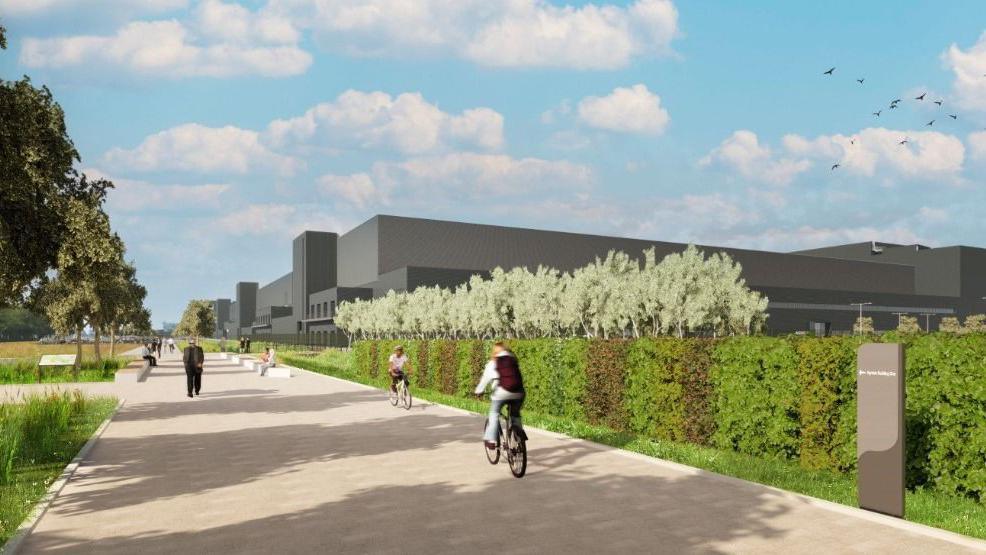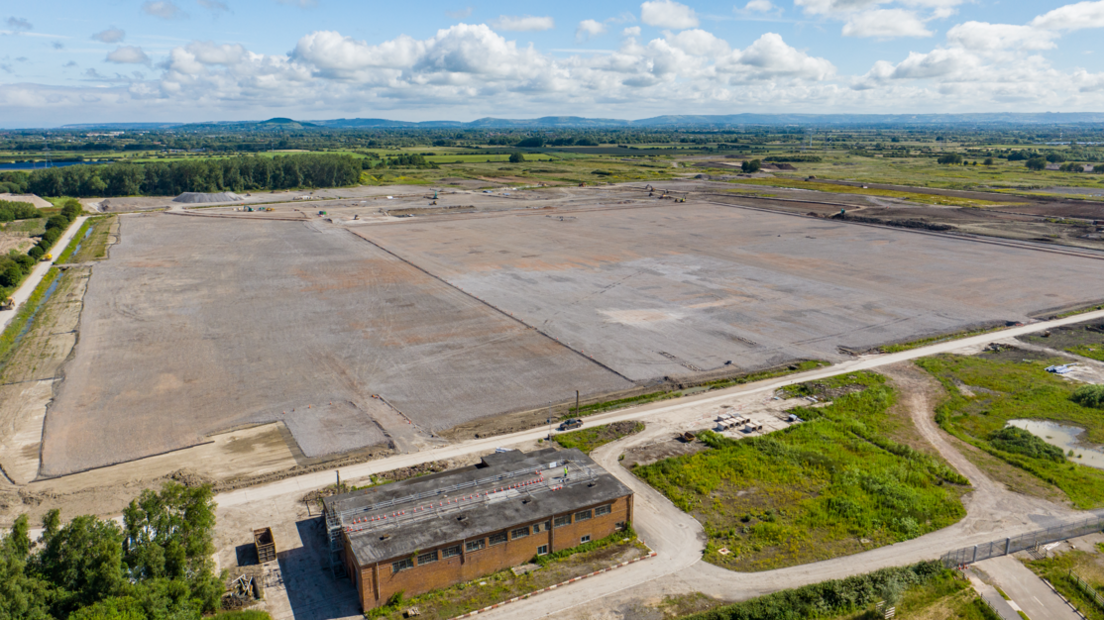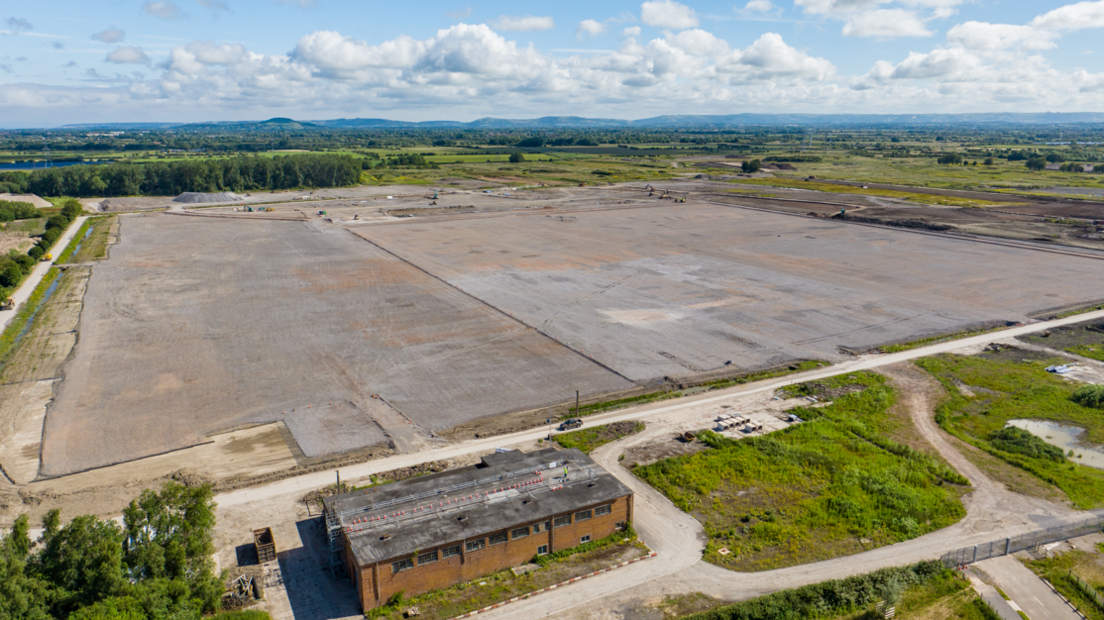Gigafactory building work may begin before Christmas

Agratas has now formally submitted plans for 'building one'
- Published
Construction at the UK's biggest electric car battery factory could begin before Christmas, if plans are approved.
The £4billion gigafactory, which is expected to be up and running by 2026, will provide electric vehicle batteries for Jaguar Land Rover.
Agratas announced in February that it would be investing in the Gravity Enterprise Zone, between Puriton and Woolavington in Somerset.
The company, part of Tata, has now submitted plans for what is being called 'building one', with a decision expected from Somerset Council before Christmas.

This orbital road will include bus stops and walking and cycling facilities
Construction firm McAlpine was awarded the contract in late-July for the pre-construction work on the former Royal Ordnance Factory site.
The project is expected to take two years to build and will involve about 2,000 construction workers.
Under the phase one proposals, building one will be constructed at the western edge of the site, with large amounts of car parking also factored in.
The majority of this building will be devoted to battery cell manufacturing, but it will also include a canteen.
A separate building will be constructed to the east, housing the electrolyte used to construct the lithium batteries and a new substation which will be needed to power the gigafactory.
A new orbital road will be created around the perimeter of the Gravity site, with incoming materials being delivered at a depot on the northern side and all outbound goods being stored in a warehouse on the southern side.
This orbital road will include bus stops and walking and cycling routes.
A spokesperson for Agratas said: “The masterplan has been developed in a fully coordinated way, with the buildings, transport and logistics and drainage strategies brought together by our coordinated design team to efficiently use space and maximise the potential future land area available for development to the east of building one and the ancillary buildings for future phases of development.”
In March the county council committed to spending up to £150m on the site's supporting infrastructure.
Get in touch
Tell us which stories we should cover in Somerset
Follow BBC Somerset on Facebook, external and X, external. Send your story ideas to us on email or via WhatsApp on 0800 313 4630.
- Published9 September 2024

- Published30 July 2024
